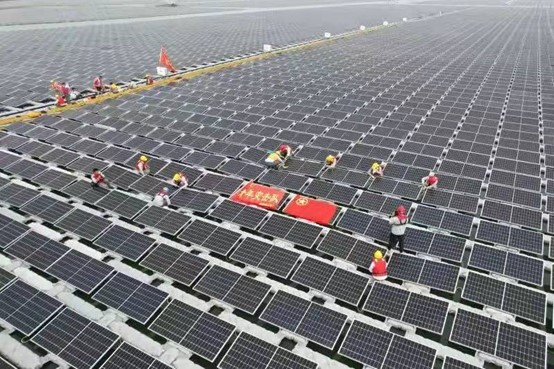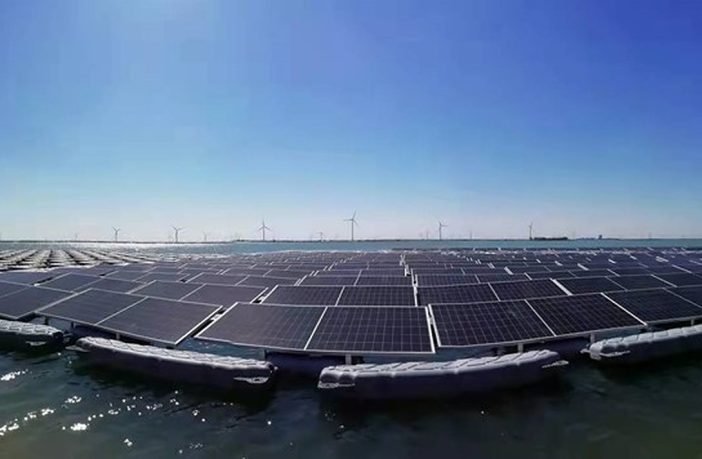- Huaneng Power International (HPI) has completed the world’s largest floating PV project – a 320 MW facility in Dezhou, in China’s Shandong province.
- It deployed the floating array on a reservoir near Huaneng Power’s 2.65 GW Dezhou thermal power station.
It built the solar plant in two phases with capacities of 200 MW and 120 MW, respectively. The first phase, which included the deployment of 8 MWh of storage capacity, was completed in 2020, while the second phase was finished between mid-September and the end of December. The facility is expected to generate around 550 million kWh of electricity per year, the company said, without disclosing additional technical details.

The second and final phase of the project was finalized at the end of December. Image credit: Huaneng Power International
The project is expected to produce around 150 million kWh per year. It will be resistant to typhoons and water corrosion, among other harsh environmental factors, said the company.
Huaneng Power also plans to build a 2 GW solar plant in Fengcheng, Jiangxi province. The experimental array will include floating PV, agrivoltaics and solar parks on fishponds. The first 320 MW unit will be completed this year, with the rest of the capacity to be installed by 2026.
Author: Emiliano Bellini
This article was originally published in pv magazine and is republished with permission.
















